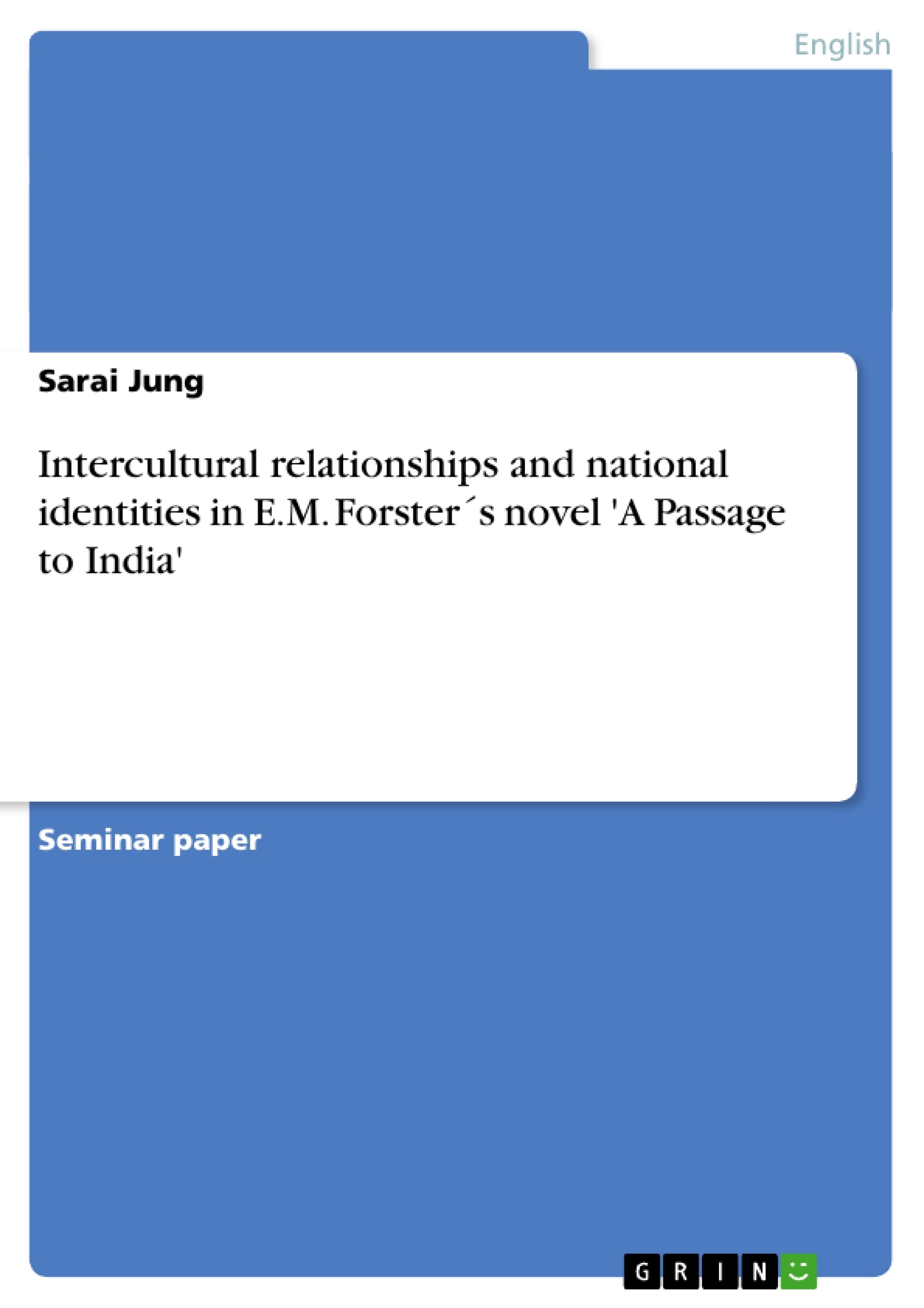E.M. Forster´s novel "A passage to India" was published in 1924. The work is largely based on the personal experiences Forster made during his two visits to India, which are the source of the striking authenticity of the text. Forster experienced the possibility of another view of life, that was opened up to him through his Indian friendships. On the other hand, he got to know the difficulties that spring up from so profoundly different approaches to life as the ones of the West and the East. Due to his own attitude of liberal-humanism and his belief in the freedom of action and the individuality of each human being as the basis for any political action, he was upset by the racial oppression, the cultural misunderstandings and the hypocrisies he found in Anglo-India. Forster´s novel is clearly concerned with the doubtfulness of the concept of superiority. It puts forth the question to what extent a culture can claim to be a civilized nation and in virtue of what it can be justified to impose one´s own way of life upon another culture. The author provides us with a vivid picture of Indian concepts and Indian sets of values without judging them or separating right from wrong. His suggestion seems to be to accept the co-existence of such alternatives. More complex is the problem of intercultural relationships. How can barriers be torn down and bridges be built? To this question, Forster does not give a definite answer. He suggests a flourishing interchange between the races until the necessary cultural sensibility is achieved. At several points in the novel, the author hints at the general possibility of a peaceful relation between the two races: All the Indians who had been in England had had only positive experiences. But within a colonial context this seems impossible. Although reconciled, Aziz and Fielding have to accept that their friendship is not possible because they have no meeting place, at least ‘not yet’, not until India has her own nation and is free from the oppression of the colonial system.
Inhaltsverzeichnis (Table of Contents)
- I. Introduction
- II. Historical background
- III. Analysis of the novel:
- 1. Introduction to the novel:
- (1) Structure of the novel
- (2) First impression
- 2. The British
- (1) The British as the Rulers
- (2) The concept of the Sahib
- (3) The concept of conformity
- (4) The treatment of the Indians
- (5) The practice of stereotyping
- (6) The manipulation of language
- 3. The Indians
- 1. The Indian self-definition
- (1) The truth of mood
- (2) The concept of diversity
- (3) The role of the subordinate race
- (4) The social gatherings
- (5) The concept of emotionality
- (6) The problem of suspicion
- (7) Stereotyping the ‘other’
- 1. The Indian self-definition
- 1. Introduction to the novel:
- IV. Conclusion
Zielsetzung und Themenschwerpunkte (Objectives and Key Themes)
E.M. Forster's novel A Passage to India explores the complexities of intercultural relationships within the backdrop of British colonialism in India. The novel delves into the societal tensions, cultural misunderstandings, and personal struggles that arise from the power dynamics between the British colonizers and the Indian population.
- The impact of British colonialism on Indian society and culture.
- The challenges of achieving genuine intercultural understanding and friendship.
- The role of stereotypes and prejudice in shaping perceptions and fostering misunderstandings.
- The consequences of racial oppression and cultural superiority on human interaction.
- The search for individual identity and self-definition in a colonial context.
Zusammenfassung der Kapitel (Chapter Summaries)
The novel is structured into three main parts: "The Mosque," "The Caves," and "The Temple," each representing a distinct phase in the exploration of intercultural relations.
In "The Mosque," the reader is introduced to the main characters, the setting of Chandrapore, and the inherent tensions between the British and Indian communities. The developing friendship between Dr. Aziz and Fielding offers a glimmer of hope for bridging the cultural divide. However, this optimism is marred by persistent misinterpretations and misunderstandings, highlighting the fragility of such connections.
"The Caves" takes the narrative further into the realm of intercultural encounters. The experiences of Mrs. Moore, Adela Quested, and Fielding in the Marabar Caves expose the complexities of navigating diverse cultures and the potential for miscommunication and misunderstanding. The events following the Caves further escalate the tensions, leading to accusations and the disintegration of trust between individuals.
Schlüsselwörter (Keywords)
A Passage to India delves into the complexities of intercultural relations in a colonial setting, focusing on themes of colonialism, racial prejudice, cultural misunderstandings, and individual identity. Key concepts explored include the British Raj, Anglo-Indian society, the role of stereotypes, the limitations of intercultural communication, and the impact of imperial power dynamics on human interaction.
- Quote paper
- Sarai Jung (Author), 2003, Intercultural relationships and national identities in E.M. Forster´s novel 'A Passage to India', Munich, GRIN Verlag, https://www.grin.com/document/15946



